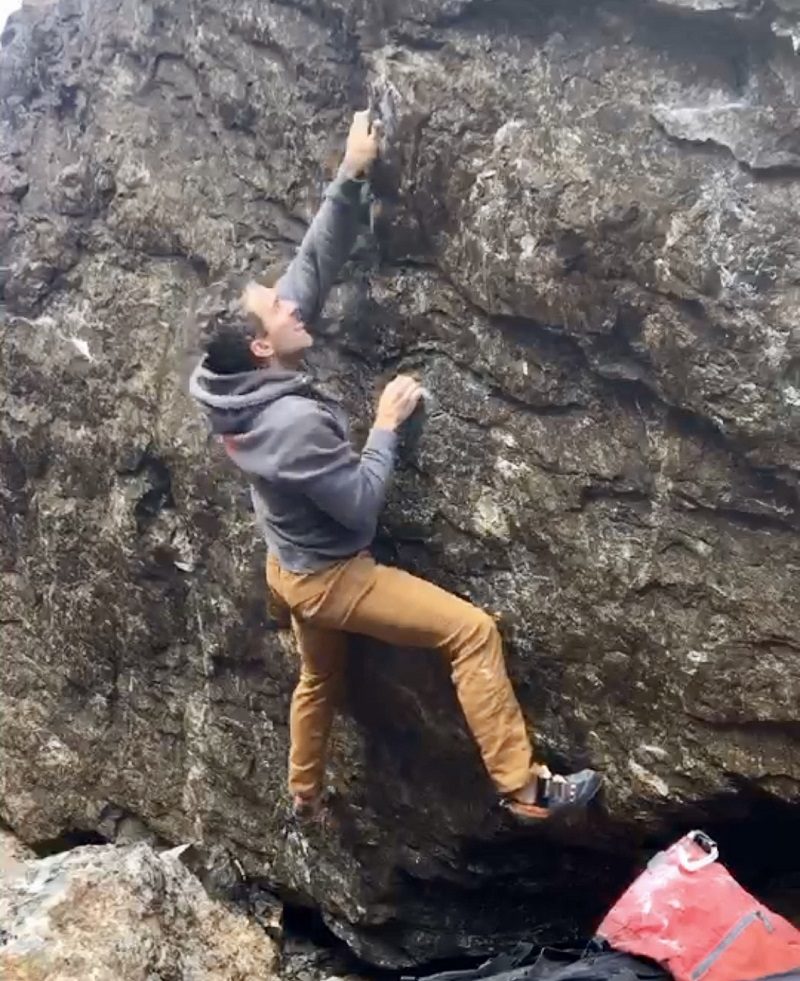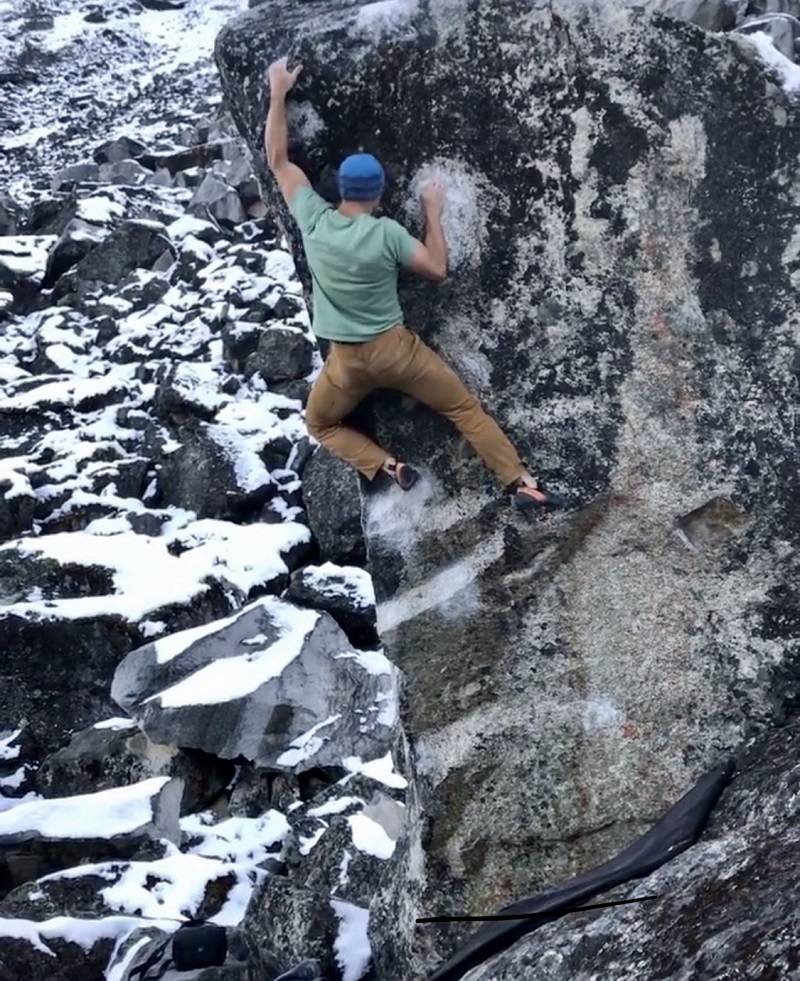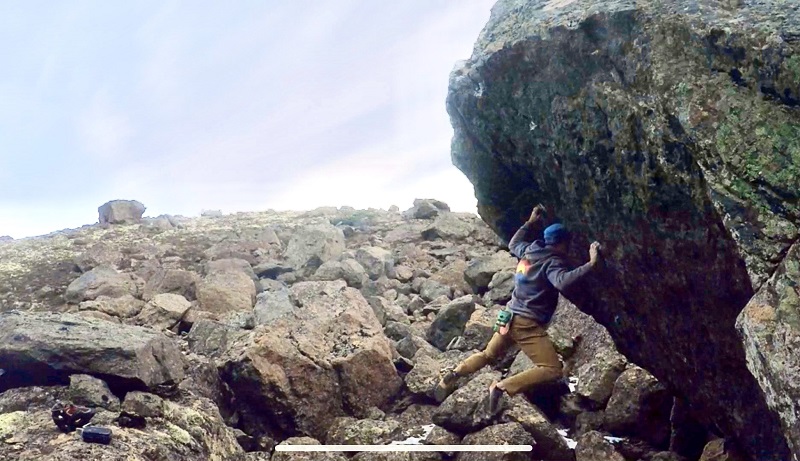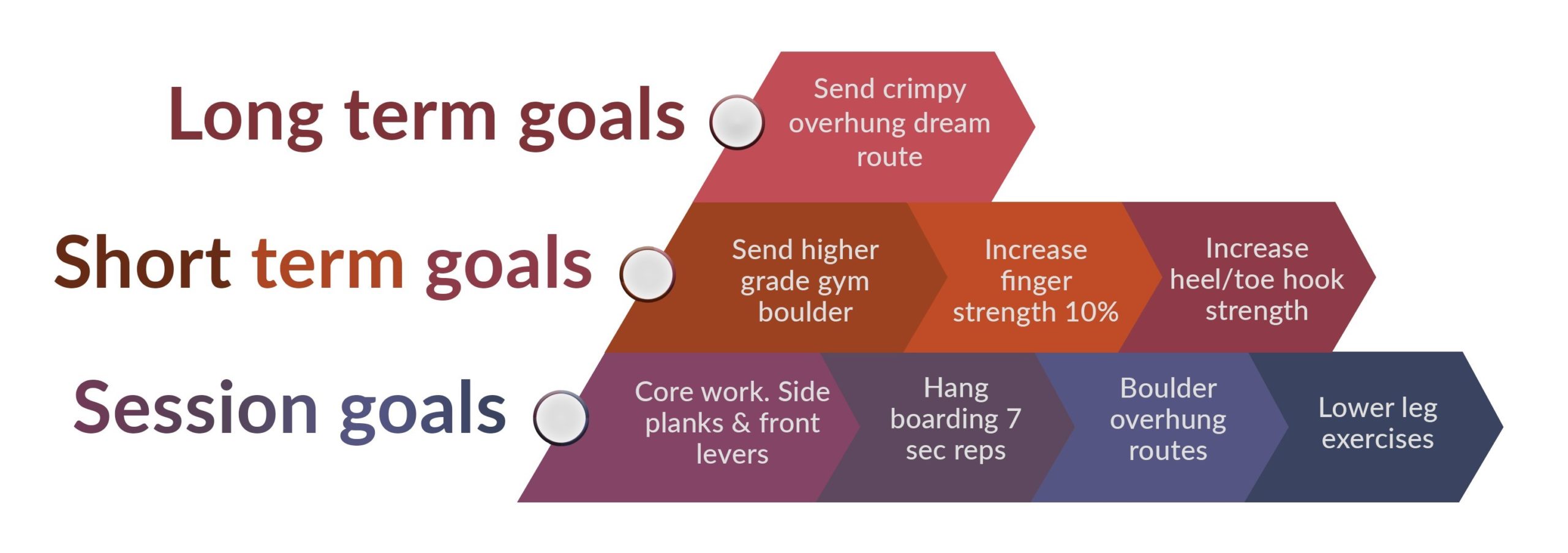Training is nothing without goals. They motivate us, encourage, inform, and provide us with focus. What good is “progression” if you’re not progressing toward something? Utterly useless, I suspect. Sure, you can build up some arbitrary facet of your climbing competency simply for the sake of “being a better climber,” and maybe it’s not bad for your climbing, but does it really make you a better climber? Or just better at that one skill…and for how long will you be better? The truth is: there’s nothing that can be gained that can’t also be lost. If you decide you’re going to train your front lever strength for a month, then spend the next two months climbing slabs, you probably gained and lost that lever strength without ever using it on the rock.
Here’s a fun story about the power of goal setting and timing a training cycle to reach that goal. A good friend of mine lives in Alaska, where the climbing season is only about 4 months long, with only about 2-3 weeks of good conditions for hard bouldering. The rest of the time the boulders are buried in snow, literally inaccessible. My friend loses motivation like clockwork once winter strikes, and proceeds to lose just about all of his climbing fitness, opting instead to enjoy the bleak Alaska winters by other means like skiing and biking. When the season is near opening, he goes into full bore training mode, but he’s nowhere near the climber he was the previous season. Here’s the good part: this man has not gone a single season in Alaska in the past 10+ years without shattering his previous bests and climbing–most often first ascending–the hardest lines the state has to offer. In two months, he’ll claw his way from V6 to V12 and beyond. It’s truly a spectacle to witness, and should be a lesson to all climbers that “training for the sake of training” is folly, but having tangible goals–such as making the most of a brutally short and capricious climbing season–can produce astounding results.

Second ascent of Black Beauty V12

First ascent of Sweet Home Alaska V12/13
These ascents came at the end of the 2019 season in Alaska, all within about a month of each other. Not bad for a guy who forsakes climbing and training for months at a time.
His secret? Knowing what he wants and how to get it.
Having adequate respect for the value of goals is just the first step. The next step is to discover and define your goals. The amount of times I’ve asked an athlete what their goal is and received the response “I want to be a better climber” is either innumerable or so painful for me to think about that I’ve blocked the number out. We all want to be better climbers. The real question is: what does that look like for you? What needs to happen to prove to yourself that you’ve reached the point of “being a better climber?” And then what? Do you just rest easy knowing that you’re a “better” climber? In order to help illustrate what progress looks like, I develop three types of goals with the climbers I coach: Long Term, Short Term, and Session. Let’s break those down.

Third ascent of When the Levee Breaks V11/V12
Long Term Rock Climbing Goals
The big ones. These are the real “reach into the future” moments: the climber you want to be, the things you want to achieve, the accomplishments you’re probably nowhere near right now. These goals should be performance-oriented, like a route you want to climb, or a competition you want to do well in. They can be as lofty as you like, so long as they’re tempered with realistic expectations. Aim to set a long term goal that truly inspires you that you will happily work toward, in the hope of achieving it.
This is the most important goal to set. Your entire training/practice regimen will be designed in the pursuit of this goal, so you had better make it something worth fighting for!
Examples of long term goals:
- Specific routes or boulder problems
- Competition performance
- Short windows of climbing, such as a trip
Related Content: I’ve Gone Up 8 Grades While Traveling The World – Here’s How (Set Epic Goals)
Short Term Rock Climbing Goals
The milestones. These are the goals that keep you on track and inform your progress. Your short term goals are determined after assessing your current levels of fitness and ability, but before actually embarking on a training plan. These goals should be moderately difficult to achieve and should be highly quantifiable. They should directly reflect positive outcomes of your training and practice–the idea is to use them as “proof” that you’re making progress. You need to be able to hit these goals, so be conservative when you set them and pleasantly surprised when you exceed them.
Depending on your circumstances, I recommend setting a mix of training- and performance-oriented goals. Training goals are set to gauge evidence of progress, and performance goals are set to maintain motivation. Some exceptions to this would be a lack of performance climbing opportunities, or simply wishing to keep your performance separate from your training (which is completely respectable, by the way).
Examples of short term goals:
- Build hip mobility
- Fill out a redpoint pyramid
- Increase finger strength by 10%
- Lose 5 lbs of fat
Session Climbing Training Goals
The “easy” ones. The ones that keep your head in the game and focused on what needs to happen next. Real “one foot in front of the other” type stuff. These goals are determined between workouts–the results from one workout will inform what needs to happen in the next, in order to achieve progressive overload (the technical term for doing harder/more work session after session).
Examples of session goals:
- Increasing the resistance in a strength exercise
- Adding time onto aerobic work
- Increasing the intensity of anaerobic work

Final Thoughts
Goals are powerful tools, just as powerful as a good training plan and a strong work ethic. To not use all the tools at your disposal is to do yourself a huge disservice. Goals give you purpose and motivate you to keep pushing forward. One of the most amazing things I’ve experienced in my climbing career is immense pride and satisfaction from achieving a goal that I worked hard to achieve. It’s what keeps me coming back for more, season after season. Knowing what you want is the first step to earning it.
Write it down. Don’t underestimate the power of the written word. It’s not enough to think about your goals–you need to put them into words. Why? The human brain is a funny thing! We have a way of forgetting things, warping reality, and convincing ourselves of non-truths. What you think you understand today, you can (and probably will) lose sight of a month from now. Putting your goals into words, on paper, solidifies them into reality. They will become inescapable. On the last stretch of your training plan, when you’re struggling to maintain focus and wondering why you’re doing all of this, those words on that paper will still be there.








